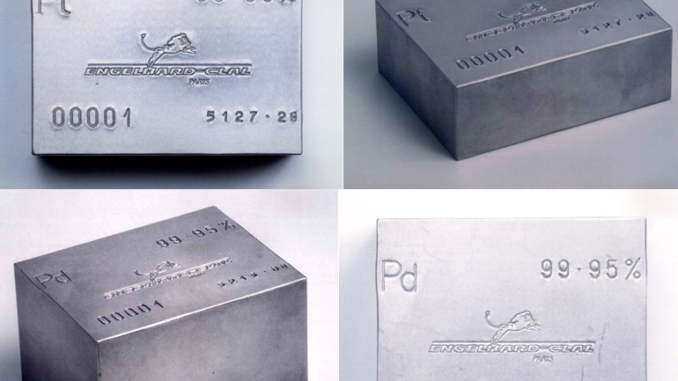
In la Tribune 14/02/2020
Everyone knows there’s been an organized rhodium shortage for the past six months. It is obvious to everyone that both rhodium and palladium are by-products of the platinum mines in South Africa and the nickel mines in Russia and Canada. In total, these countries produce less than 35 tons of rhodium each year, while platinum production is 8 times greater, palladium 10 times greater and gold 120 times greater.
It is well known that at least one European car manufacturer does not have enough rhodium, a metal that is essential for the catalytic converters of gasoline engines to treat NOx, and that each vehicle contains 2 to 4 grams of PGM’s.
Everyone knows that this little crisis is amplified by a few investors who each bought 1000 t.oz (troy ounce) (31Kg) of rhodium between 1.600 and 2.500 dollars/t.oz, for the luckiest ones. They all hope to resell them all at $15,000 or $20,000 while the current price of $11,000 already looks like a grenade wrapped with chocolate.
Trading at Noisy-le-Sec
So far nothing new. This is my fourth rhodium crisis, and what everyone doesn’t know is that during the previous crises the Parisian district of Le Marais and the city of Noisy-le-Sec near Paris became the world centre of rhodium trading. We imported metal from Moscow and Johannesburg and it was exported from Rue de Paris in Noisy Le Sec to Washington, Tokyo and all over Europe. Unit lots were from 3,000t.oz to 5,000t.oz and the margins were substantial. Connections are still alive and well.
This mini rhodium and palladium crisis is therefore not a reflection of a shortage of supply, indeed we produce more than in the past, but, as always, of an increase in demand linked to the tightening of automobile depollution standards: everyone wants more PGM’s, at the same time, in a disordered way, given the dieselgate and the multiplier effect of the new depollution standards in China.
Blood on the walls
As always the story will end with blood on the walls when the soufflé will fall down thanks to the substitution. The latter could temporarily come from platinum which would replace palladium and lighten the consumption of rhodium. However, it is more likely to come from the electric car and not the hybrid vehicle. The latter is the best compromise for manufacturers, but the least reasonable for metals.
Hybrid combines the consumption of the PGM for the catalytic converter with that of the metals in the battery. Although the latter are lighter in a hybrid battery than in a 100% battery electric vehicle, quantities of PGM are identical between a conventional car and a hybrid.
In short, the crisis of the car has become the crisis of metals, and the solution will come from metals.